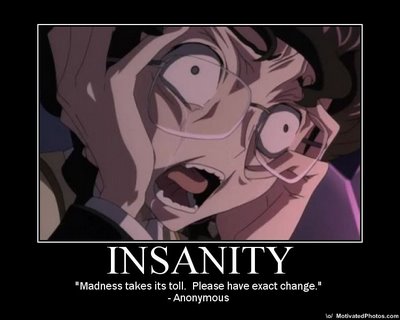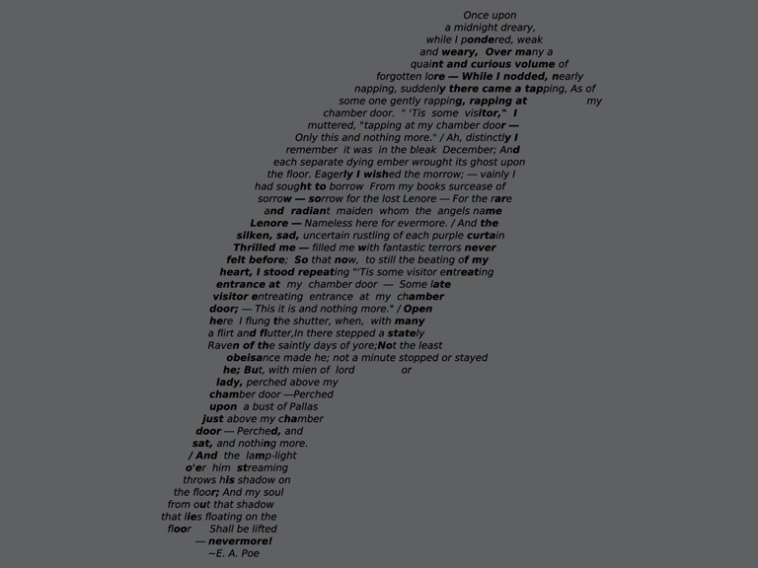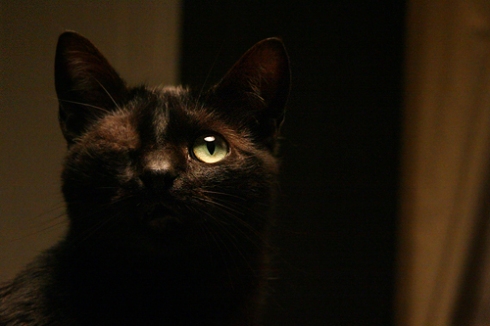Regret: Searching For American Dreams in the Mirror-“Natasha”
Henry David Thoreau, Regret Conossieur
“Make it a rule of life never to regret and never to look back. Regret is an appalling waste of energy; you can’t build on it; it’s only for wallowing in.” So said Katherine Mansfield, writer. Henry David Thoreau, ever the devil’s advocate, wrote “Make the most of your regrets; never smother your sorrow, but tend and cherish it till it comes to have a separate and integral interest. To regret deeply is to live afresh.” Both opinions illustrate the part regret has come to play in the minds of the American people. Either it is wallowed in, or disregarded entirely. It doesn’t matter how one deals with their own regret; it invariably returns to haunt them.
A cultural haunting, according to coiner of the term Kathleen Brogan, is a new genre of ghost story, focusing on the haunting of a group and driven by a collective unconscious. No more are the thrilling fireside tales of yore; instead the reader experiences a rediscovering of identity and a hallucinatory haunting of the self. Toni Morrison has written about a concept she calls “rememory”, where an object or person may be gone but lives on in the thoughts and memories of those close to it. No longer is “I think, therefore I am” relevant. Instead, it should be written “I remember, therefore it is.” Such is a cultural haunting.
Regret can be a cultural haunting, particularly in how it pertains to Americans and the much-vaunted “American Dream”. Jacques Lacan, a French psychologist, pioneered a psychoanalytic theory known as the mirror stage. In the mirror stage children, recognizing themselves for the first time in the mirror, create an idealized version of the self that they will never be able to achieve. And so, automatically, from six months onwards, humans are failures, at least in comparison to their “perfect selves”. This wouldn’t be a problem in many other cultures, where accomplishing all of one’s dreams is not seen as feasible or necessary. But, in America, a nation whose citizens not only desire but expect justice, equality, and social mobility, the mirror stage has created a perfect storm of dissatisfaction. Even in the richest nation in the world, people are unable to achieve all they aspire to, and it’s a difficult pill to swallow. Regret festers.
Richard Russo’s Empire Falls and Edgar Allan Poe’s A Dream Within A Dream are good examples of thwarted Americana, and will be discussed later. Russo paints a subtle portrait of quietly dying dreams in a small town, and the almost imperceptible acceptance of that loss. In Empire Falls, desires are sacrificed upon the altar of reality. Poe, by contrast, writes a histrionic and Gothic portrayal of grief and loss, an existentialist dirge to wanting what can’t be possessed.
Humans, and Americans in particular, are compelled to live up to the unrealistic and idealized self they once glimpsed and loved as infants. Society showcases success stories and shoves the average masses under the carpet, enforcing impractical moral, financial, and emotional obligations. Nostalgia or remorse is shamed. Regret is the inevitable result of all these factors, and it needs to be accepted as a part of life instead of treated like a disease or a personal fault.
Katherine Mansfield, enemy of regret everywhere.
The general public is hopeful about aging. At the TED talks, a panel proclaims that “90 is the new 50.” The question of whether people want 90 to be the new 50 is not brought up. It is simply assumed that, with so much to do and fix, anyone would want to live forever. Having “a sense of purpose” and advanced caloric restriction have been deemed helpful.
Vanity Fair frets that the American Dream might be disappearing. In the depths of the Great Depression, they say, things were better. At least then a man could pull himself up by the bootstraps and make something of himself. Now we are facing, as President Obama has proclaimed, “An American Dream in reverse.” The thought is frightening. Once again America is in dire straits, and for everyone (but particularly the working class), achieving all of one’s hopes and dreams has become increasingly difficult. Some might even call it unrealistic.

Obama is worried about the American Dream.
Lacan, who as previously mentioned created the concept of the mirror stage, elaborated in an admittedly wordy lecture known as “The Mirror Stage as Formative of the Function of the I as Revealed in Psychoanalytic Experience”. Though the lecture was intended for psychoanalysts and not laypeople, and at places reads as psychobabble for the uninitiated, the basic concept of the mirror stage is intact.
Sometime between six and eighteen months, when a human child is still developmentally immature and less advanced than, say, a chimpanzee, they will stare at a person in the mirror and recognize that person as themselves. This is a massive step in their cognitive development, the recognition of self, because for the first time the baby is aware of being separate from, and different than, the mother. The baby, liberated, begins to develop self-control, thoughts, logic, and, most importantly, an idealized self. That is, they become human.
They will look into their own image (Lacan referred to it as the imago), think of it as perfect, and identify it as themselves. Thus begins a lifelong quest to strive towards this “I”, to literally find oneself. This splitting of self image can lead to such mental conditions as anxiety, neurosis, and psychosis. It can also lead to regret, whether because one never finds themself or because they do and realize that they can never be that baby in the mirror.
Since this essay psychoanalysis has been attempting to find a cure for regret. However, the field has had little to contribute in the way of answers. Regret appears to be deep rooted in the psyche. And the American social system isn’t helping.
Barbara Ehrenreich wrote a groundbreaking book, deep undercover as one of the working poor, called Nickel and Dimed: On (Not) Getting By in America. She found that social mobility was largely a lie, prevented by dead-end jobs, unaffordable education, and check-cashing scams, and that when one was entrenched in the lower class, one tended to stay there. After learning that one of her coworkers was renting out a motel room by the night, she scolded her and said to go get an apartment. The coworker looked at her, and said that she had no money for a down payment. Economic circumstances by necessity can stifle desires and moral virtue, and breed regret
David Brooks, New York Times columnist, wrote a book called The Social Animal. It has an innovative structure, wrapping statistics and studies around the birth, life, and death of a fictional man named Harold. Harold struggles to accept his own, stolidly middle class existence, and the contrast it poses to the romantic aspirations of his youth. His wife, Erica, has an affair and regrets it, not because she betrayed her husband but because she felt as if she wasn’t living up to her self imposed moral code. Erica and Harold spent their lives striving towards their “Ideal I’s”, and were consumed with regret when they relapsed into what they viewed as mediocrity. Sociology shows that regret is unavoidable in the human condition.
Philip Roth, novelist, is a writer. His masterpiece, Pulitzer-prize winning American Pastoral, takes a literary perspective on regret. The main character, Seymore “Swede” Levov, living embodiment of the American dream, feels as if he has avoided regret entirely. His immigrant father and grandfather have built from nothing a successful glove-manufacturing empire, and he inherits it just before marrying the beautiful Miss New Jersey. And yet, regret encroaches, rearing it’s ugly head upon the scene. His only daughter turns radical, blows up a post office, and goes underground. He cheats on his wife. His wife cheats on him. Later on in the book, Roth writes of The Swede that ““Never in his life had [he] occasion to ask himself, “Why are things the way they are?” Why should he bother, when the way they were was always perfect? Why are things the way they are? The question to which there is no answer, and up till then he was so blessed he didn’t even know the question existed.” And regret treads its toiling way through the humanities, manifesting here as the desire to know why.
Theology has few answers. Dag Hammarskjöld, former secretary-general of the UN, dead since 1961 by way of plane crash, and a deeply religious man, posthumously published a book called Markings. Viewed as a classic of spiritual literary discourse, it is absolutely chock-full of regret. An entry shortly before is death reads as a poem: “Summoned/To carry it,/Aloned/To assay it,/Chosen/To suffer it,/And free/To deny it,/I saw/For one moment/The sail/In the sun-storm,/Far off/On a wave-crest,/Alone,/Bearing from land./For one moment/I saw.” Bent by the burden of virtue, he saw for one moment his perfect self, and it slipped away. Mother Theresa’s personal writings are similarly tormented. If two people we can justifiably view as paragons of faith are touched by regret, who isn’t?

Jacques Lacan ponders the nature of existence.
Two texts covered in class have interesting perspectives of regret. One, Empire Falls, Richard Russo’s novel, is suffused with regret, in a mild, long-suffering way. Miles, the mild, long-suffering main character, was in his last semester of college when called home by his dying mother, and now manages a apathetic restaurant. He married a woman who he didn’t love and cheated on him, and is in love with a waitress but too shy to tell her. His wife regrets leaving him. His daughter regrets her lack of friends and hormonal teenaged love life. A boy at her school with regrettably absent parents opens fire and shoots up a sixth period art class, a situation which everyone regrets.
But, at the same time, there’s a deeper level of remorse, beyond the mere plot of the story. Regret has seeped into the bones of the town itself. There is a pervasive sense of contentment rather than ecstasy, of being satisfied rather than fulfilled. Love is a fairy tale, and if one attempts to “search for themselves”, they better find whatever they’re looking for quick, settle down, and grow up. Each parent wants better for their child, and every child follows the footsteps of the parent. There is a haunted feel about Empire Falls. Once could even call it a cultural haunting. The town is filled with the ghosts of expectations, spilling over with dead dreams.
A Dream Within A Dream shows a very different sort of cultural haunting. The narrator is mourning the ghost of his lost love one, and regretting his lost love. Though he knew that his relationship could never last, he embarked upon it anyways. That is, for him, regret was inevitable in order to experience love.
In the second stanza, his point expands to include life itself and the meaning of his existence. Life doesn’t matter, he writes, it is “But a dream within a dream”, and yet, he clings to it anyway. For the narrator, death and regret go hand in hand, and he accepts it, even revels in it. Regret is a necessary evil in order to fully experience life.
Richard Russo’s Empire Falls.
Regret, be it marital, martial, or mortal, is an essential and unavoidable part of living. Humans are programmed from infancy onwards to view regret as shameful, as a symptom of failure when one is unable to become the “Ideal-I” and live up to impossible expectations. Culture, American culture in particular, advances this stigmatization of regret by creating an artificial social construct that encourages unrealistic expectations and punishes those that cannot achieve them. Entitlement to success and fulfillment in combination with the Lacanian “I” and tempered by reality leads to regret.
Some might think that the solution is to discourage aspirations and hopes of social equality, or to attempt to re-engineer or psychoanalyze the mind. This is an absolutely wrongheaded answer. Instead of attempting to banish or explain away regret, it should be accepted as the result of a life well lived, instead of shunned as a social taboo. Healthy regret should be welcomed. One will always fail to meet some expectations, whether they are imposed by themselves or others, and regret in these situations should be affirmed as a normal response and dealt with before moving on. Though one may never live up to that image of perfection glimpsed once as a child, they can still strive to become the best and happiest person they know how to be, complete with a full spectrum of emotions, regret included. Upon this perhaps Thoreau and Mansfield could agree.
Works Cited
Brooks, David. The Social Animal. N.p.: n.p., n.d. Print.
Eihrenrich, Barbara. Nickled and Dimed: On (Not) Getting By in America. N.p.: Metropolitan Books,
2001. Print.
Hammarskjöld, Dag. Markings. N.p.: n.p., 1963. Print.
Kamp, David. "Rethinking The American Dream." Vanity Fair. N.p., n.d. Web. 26 July 2012.
<http://www.vanityfair.com/culture/features/2009/04/american-dream200904>.
Lacan, Jacques. "The Mirror Stage as Formative of the Function of the I as Revealed in
Psychoanalytic Experience." Paris. Lecture.
Poe, Edgar Allan. A Dream Within A Dream. N.p.: n.p., n.d. Print.
Roth, Philip. American Pastoral. N.p.: n.p., n.d. Print.
Russp, Richard. Empire Falls. N.p.: Vintage Contemporaries, n.d. Print.
Trost, Matthew. "WSF report: 90 Is the New 50." TED Blog. TED, 2 June 2008. Web. 26 July 2012.
<http://blog.ted.com/2008/06/02/wsf_report_90_i/>.














